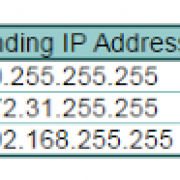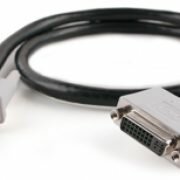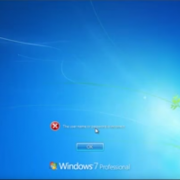Difference between windows server 2008, 2012 and 2016 operating system
माइक्रोसॉफ्ट ने 2017 तक बहुत सारे विंडोज डेस्कटॉप एंड विंडोज सर्वर ऑपरेटिंग सिस्टम लांच किये है । सबसे पहले Windows NT के नाम से Windows NT 3.1, Windows NT 3.5 Server, Windows NT 4.0 सर्वर एवं Windows 2000 सर्वर लांच किये गए थे । लेकिन बाद मे windows server brand name से सर्वर एडिशन स्टार्ट किये गए जिनमे Active Directory, DNS, DHCP Server, Group Policy जैसे features के साथ बहुत सारे पॉपुलर फीचेर्स add किये गए जो की आज भी बहुत उपयोग मे आते है । See list of windows server editions –
| S.No | Widows Name | Release Date | Server Editions |
|---|---|---|---|
| 1 | Windows NT 3.1 | 27 July 1993 | Workstation, Server |
| 2 | Windows NT 3.5 | 21 September 1994 | Workstation, Server |
| 3 | Windows NT 3.51 | 30 May 1995 | Workstation, Server |
| 4 | Windows NT 4.0 | 24 August 1996 | Workstation, Server, Server Enterprise Edition, Terminal Server, Embedded |
| 5 | Windows 2000 | 17 Feb 2000 | Professional, Server, Advanced Server, Datacenter Server, Powered (Embedded) |
| 6 | Windows Server 2003 | 24 April 2003 | Standard, Enterprise, Datacenter, Web, Storage, Small Business Server, Compute Cluster |
| 7 | Windows Server 2008 | 27 Feb 2008 | Web Core, Standard, Enterprise, Small Business Server, Datacenter , HyperV, Foundation, Storage |
| 8 | Windows Server 2008 R2 | 22 Oct 2009 | Standard , Enterprise, Datacenter |
| 9 | Windows Server 2012 | 04 Sept 2012 | Foundation Essentials Standard Datacenter |
| 10 | Windows Server 2012 R2 | 18 Oct 2013 | Foundation Essentials Standard Datacenter |
| 11 | Windows Server 2016 | 12 Oct 2016 |
 ऊपर की लिस्ट मे सभी सर्वर्स के एडिशन्स की इनफार्मेशन दी गयी है अब हम यहाँ पर विंडोज सर्वर्स के अलग अलग एडिशन्स के बिच जरुरी अंतर को बता रहे है –
ऊपर की लिस्ट मे सभी सर्वर्स के एडिशन्स की इनफार्मेशन दी गयी है अब हम यहाँ पर विंडोज सर्वर्स के अलग अलग एडिशन्स के बिच जरुरी अंतर को बता रहे है –
| Feature | Windows Server 2008 R2 | Windows Server 2012 R12 | Windows Server 2016 |
|---|---|---|---|
| Shielded VM | Not Supported | Not Supported | Fully Supported |
| Credential Guard | Not Supported | Not Supported | Fully Supported |
| Remote Credential Guard | Not Supported | Not Supported | Fully Supported |
| Code Integrity (Device Guard) | Not Supported | Not Supported | Fully Supported |
| AppLocker | Partially Supported | Fully Supported | Fully Supported |
| Control Flow Guard | Not Supported | Not Supported | Fully Supported |
| Windows Defender: included antimalware |
Not Supported | Not Supported | Fully Supported |
| Host Guardian Service | Not Supported | Not Supported | Fully Supported |
| Device Health Attestation Service |
Not Supported | Not Supported | Fully Supported |
| Privileged Access: Just Enough Administration |
Partially Supported | Partially Supported | Fully Supported |
| Privileged Access: Just-in-Time Administration |
Fully Supported | Fully Supported | Fully Supported |
| Virtualization Based Security | Not Supported | Not Supported | Fully Supported |
| Virtual TPM: Trusted Platform Module |
Not Supported | Not Supported | Fully Supported |
| BitLocker encryption | Fully Supported | Fully Supported | Fully Supported |
| SMB 3.1.1 security improvements | Not Supported | Not Supported | Fully Supported |
| Dynamic Access Control | Not Supported | Fully Supported | Fully Supported |
| AD Rights Management Services | Fully Supported | Fully Supported | Fully Supported |
| Azure Rights Management Connector |
Not Supported | Fully Supported | Fully Supported |
| Enhanced auditing for threat detection |
Fully Supported | Fully Supported | Fully Supported |
| PowerShell 5.1 security features | Partially Supported | Partially Supported | Fully Supported |
| New domain services capabilities | Not Supported | Partially Supported | Fully Supported |
| Better sign-on to Azure AD and Office 365 |
Not Supported | Not Supported | Fully Supported |
| Improved sign-on experience | Not Supported | Not Supported | Fully Supported |
| Strong authentication options | Not Supported | Not Supported | Fully Supported |
| Simpler upgrade, deployment, and management |
Not Supported | Not Supported | Fully Supported |
| Conditional access | Not Supported | Not Supported | Fully Supported |
| Developer focus | Not Supported | Partially Supported | Fully Supported |
| Active Directory Lightweight Directory Services |
Fully Supported | Fully Supported | Fully Supported |
| Web Application Proxy | Not Supported | Partially Supported | Fully Supported |
| Linux and FreeBSD virtual machines for Hyper-V |
Partially Supported | Fully Supported | Fully Supported |
| Linux Secure Boot | Not Supported | Not Supported | Fully Supported |
| PowerShell Desired State Configuration for Linux |
Not Supported | Partially Supported | Fully Supported |
| Manual hot add and remove memory |
Not Supported | Not Supported | Fully Supported |
| Storage Spaces Direct | Not Supported | Not Supported | Fully Supported |
| Health Service | Not Supported | Not Supported | Fully Supported |
| Resilient File System | Not Supported | Partial Supported | Fully Supported |
| Data deduplication | Not Supported | Partial Supported | Fully Supported |
| SMB 3.0 | Not Supported | Fully Supported | Fully Supported |
| Work Folders – overview | Not Supported | Partial Supported | Fully Supported |
| Chkdsk Performance | Partial Supported | Fully Supported | Fully Supported |
| iSCSI | Not Supported | Fully Supported | Fully Supported |
| (NFS 4.1 Support | Not Supported | Fully Supported | Fully Supported |
| Datacenter Bridging | Partial Supported | Fully Supported | Fully Supported |
| Network Controller | Not Supported | Not Supported | Fully Supported |
| Software Load Balancer | Not Supported | Not Supported | Fully Supported |
| Network Address Translation | Not Supported | Fully Supported | Fully Supported |
| Distributed firewall | Not Supported | Not Supported | Fully Supported |
| User-defined routing | Not Supported | Not Supported | Fully Supported |
| Port mirroring | Not Supported | Partial Supported | Fully Supported |
| Multi-Tenant Gateway | Not Supported | Partial Supported | Fully Supported |
More Differences –
Physical Memory Support :
Wk12/Wk12 R2 Standard and Datacenter : Up to 4 TB per physical server
Windows Server 2016 Standard and datacenter : Up to 24 TB per physical server
Virtual Machine Memory Support :
Wk12/Wk12 R2 Standard and Datacenter : Up to 1 TB per virtual machine
Windows Server 2016 Standard and datacenter : Up to 12 TB per virtual machine
Minimum System requirements :
Windows Server 2008 and R2: X86-64 Platform- 1.4 Ghz CPU, 512 MB RAM, 20 GB (32 bit) and 32 GB(64 bit) hard drive space
Windows Server 2012 : 1.4 Ghz CPU, 512 MB RAM, 32 GB hard drive space
Windows Server 2016 : 1.4 Ghz CPU, 512 MB RAM, 32 GB + 4 GB (GUI), Supports NX, DEP, CMPXCHG16b, LAHF/SAHF, PrefetchW and Second Level Address Translation (EPT or NPT), Ethernet adapter with at least gigabit throughput



